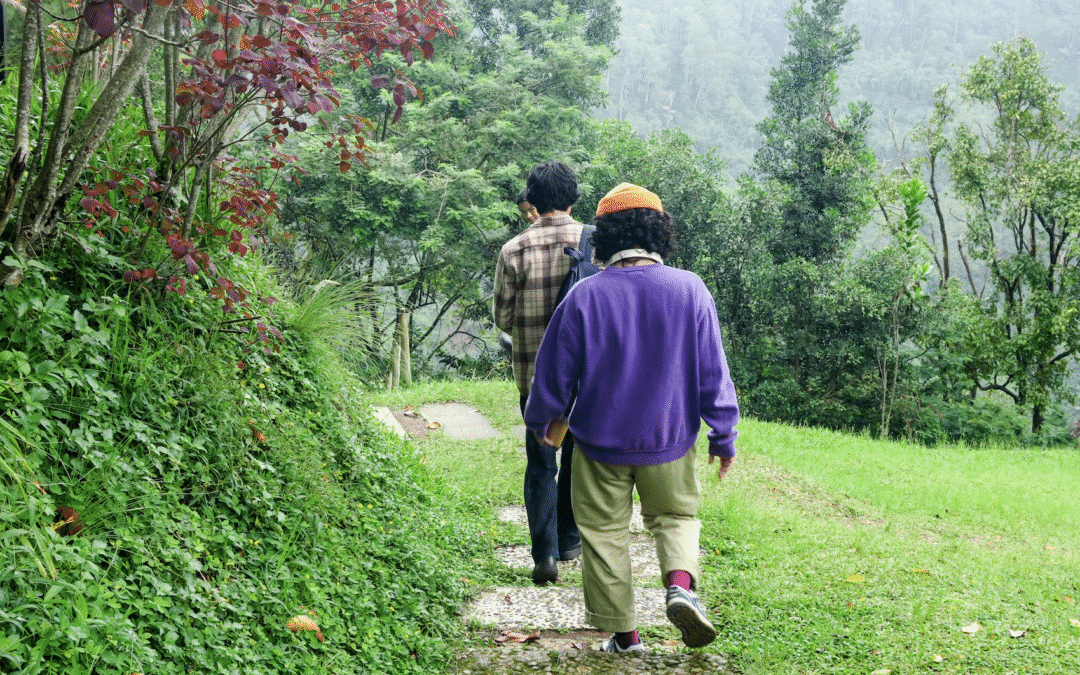When was the last time you went for a walk without music, podcasts, or scrolling through your phone? If you can’t remember, you’re not alone, and that’s precisely why “silent walking” became one of the years most viral wellness trends. The hashtag garnered nearly 600,000 views on TikTok as people discovered something simultaneously ancient and revolutionary: walking alone with only your thoughts for company.
How a TikTok Started a Movement
TikTok creator Mady Maio kicked off the trend in June 2023 when she posted about advice from her nutritionist to walk 30 minutes daily instead of intense cardio. Her boyfriend then challenged her to do it without listening to anything. The first two minutes felt like “mental mayhem,” she reported, but then something shifted. She entered a flow state where everything went quiet and she could actually hear herself think. After 30 minutes, the brain fog lifted and she experienced a clarity she’d been searching for.
Her video collected 50,000 views and sparked countless others to try the practice. While some detractors scoffed (“Gen Z discovers walking!”), many found silent walking to be both mentally challenging and deeply reconnecting. The trend tapped into a growing awareness that we’re overstimulated, constantly plugged in, and rarely alone with our own minds.
The Science Behind the Silence
Research backs up what practitioners instinctively feel. Studies show that even just two minutes of silence can significantly reduce heart rate and blood pressure, while noisy environments increase cortisol levels and make concentration difficult. Adults who take 90-minute walks in nature manage better with anxious and negative thoughts, have less tendency to ruminate, and more easily find mental peace.
Walking itself already delivers impressive benefits: reduced risk of cardiovascular disease, type 2 diabetes, and dementia, plus improved sleep, longevity, and mental wellbeing. Adding mindfulness amplifies these effects. By removing distractions, silent walking allows participants to become more aware of their inner and outer environments, shifting the mind into a different mode of rest and focus.
“Sleep is not the only form of rest,” notes mindfulness author Lalah Delia. “Practices like silent walking and walking meditation are also forms of rest.” The practice increases self-awareness, helps with goal-setting, and leads to more intentional living. It also lowers anxiety by grounding you in the present moment rather than spinning through hypothetical futures or ruminating on the past.

How to Start
Experts recommend starting small and building gradually. Begin with just 5-10 minutes if 30 feels overwhelming. Walk somewhere safe and ideally in nature, at a time when foot traffic is minimal. Leave your phone behind or at least keep it silenced and out of sight. Go alone. Even your dog creates distraction, though some practitioners consider that an acceptable compromise.
Take care of basic needs like hunger or thirst beforehand so they don’t become distractions. Then focus on your sensations, your breathing, the surrounding beauty. Be mindful of each step, listen to nature’s sounds, feel gratitude for the sun on your skin. Use the time for reflection without judgment about what thoughts arise.
The goal isn’t to achieve perfect mental emptiness. It’s to create space for whatever emerges when you’re not filling every moment with external input. Some walks you’ll problem-solve. Others you’ll daydream. Sometimes you’ll just notice how the light filters through trees or how your feet feel hitting the ground. All of it counts as the practice.

The Bigger Picture
The viral success of silent walking reflects deeper cultural exhaustion with always-on connectivity. We’re recognizing that being constantly plugged in isn’t just tiring, it’s fundamentally changing how we think, process emotions, and relate to ourselves. The trend offers a small act of resistance: choosing presence over distraction, stillness over stimulation, your own thoughts over someone else’s content.
Whether you try it once or build it into your routine, silent walking reminds us that sometimes the most powerful wellness practice is also the simplest: putting one foot in front of the other, alone with the quiet voice inside that’s been waiting for us to finally listen.

